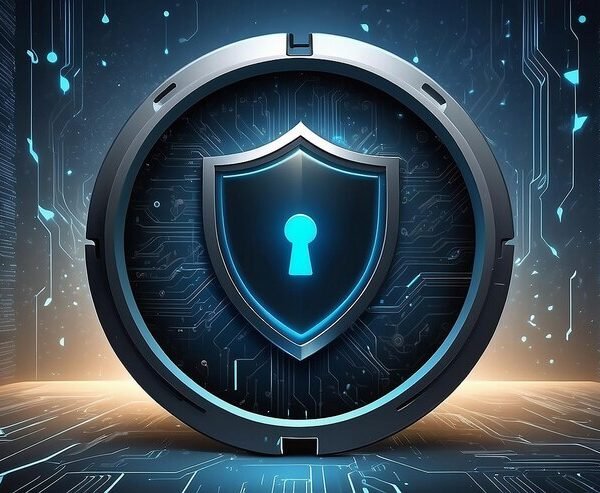A Beginner’s Guide to Blockchain
Imagine a world where every transaction is secure, transparent, and almost impossible to tamper with. A world where data is decentralized, eliminating the need for middlemen and central authorities. That’s the promise of blockchain technology, a revolutionary innovation that’s rapidly transforming industries worldwide. This guide aims to provide a comprehensive introduction to blockchain for beginners, covering the basics, its applications, and its future in various industries.
Key Takeaways:
- Blockchain is a decentralized, distributed ledger technology that securely records transactions across a network.
- It offers benefits like enhanced security, transparency, and reduced costs across various applications.
- Blockchain has potential use cases in voting systems, supply chain management, healthcare, and cryptocurrencies, among others.
- Understanding blockchain’s fundamentals and applications is crucial for businesses and individuals seeking to leverage this transformative technology.
What is Blockchain?
Let’s start by demystifying this buzzword. A blockchain is essentially a digital ledger that records transactions in a decentralized, distributed manner. Unlike traditional databases, it doesn’t rely on a central authority or intermediary.
Instead, blockchain uses a peer-to-peer network where each participant (or “node”) has a copy of the entire ledger. When a new transaction occurs, it’s first verified by the network nodes, then added as a “block” to the existing chain of transactions.
- The transaction is broadcasted to the entire blockchain network.
- Nodes validate the transaction based on predefined rules.
- Once validated, the transaction is added to a new block.
- The new block is cryptographically linked to the previous block, forming an immutable chain.
This decentralized nature of blockchain, coupled with advanced cryptography, makes it incredibly secure and transparent. Since every node has a copy of the ledger, altering any data would require an immense amount of computational power to override the entire network – an almost impossible task.
“But why should I care about this technology?” you might ask. Well, blockchain offers several game-changing benefits:
- Security: The decentralized and distributed nature of blockchain makes it highly resistant to hacking, fraud, and data manipulation.
- Transparency: Every transaction is publicly visible and verified, promoting trust and accountability.
- Immutability: Once data is recorded on the blockchain, it cannot be altered or deleted, ensuring an auditable trail.
With its revolutionary potential, it’s no wonder blockchain is gaining traction across various industries. From finance to supply chain management, healthcare to voting systems, the applications of this technology are vast and exciting.
Blockchain Applications
The beauty of blockchain lies in its versatility. While it initially gained fame as the backbone of cryptocurrencies like Bitcoin, its applications extend far beyond that. Let’s explore some of the most promising use cases:
- Supply Chain Management: By recording every step of a product’s journey on the blockchain, businesses can increase transparency, reduce costs, and combat counterfeiting. Companies like Walmart and IBM are already leveraging blockchain for supply chain tracking and tracing.
- Healthcare: Blockchain can revolutionize the way we store and share medical records, ensuring data privacy, security, and easy accessibility for authorized parties. Companies like Guardtime and Gem are pioneering blockchain-based healthcare solutions.
- Voting Systems: The immutable and transparent nature of blockchain could potentially enhance the security and integrity of voting processes, reducing the risk of voter fraud and increasing public trust in election results.
- Cryptocurrencies: While Bitcoin was the first application of blockchain, the technology has since given rise to numerous other cryptocurrencies like Ethereum, Litecoin, and Ripple, facilitating secure, decentralized digital transactions.
- Smart Contracts: Blockchain enables the creation of self-executing contracts, reducing the need for intermediaries and automating processes like payments, asset transfers, and more.
Each of these applications leverages the core benefits of blockchain – increased transparency, reduced costs, improved security, and enhanced efficiency. As adoption continues to grow, we can expect to see even more innovative use cases emerge.
Blockchain in Voting Systems
One of the most promising applications of blockchain is in the realm of voting systems. Traditional voting methods, whether paper-based or electronic, are often plagued by concerns of security, transparency, and voter fraud. Blockchain has the potential to address these issues by creating a tamper-proof, decentralized system for recording and verifying votes.
Here’s how a blockchain-based voting system could work:
- Voter Registration: Voters’ identities are securely verified and recorded on the blockchain, ensuring only eligible individuals can participate.
- Ballot Casting: Voters cast their ballots electronically, which are encrypted and recorded as transactions on the blockchain.
- Verification and Counting: The decentralized network of nodes verifies the authenticity of each vote, ensuring transparency and preventing double-voting.
- Results Tallying: The immutable nature of the blockchain ensures that vote counts cannot be altered or manipulated, promoting trust in the final results.
While blockchain-based voting systems are still in their early stages, several pilot projects and experiments have already been conducted. For instance, West Virginia became one of the first states to allow overseas military personnel and civilians to cast ballots using a blockchain-based mobile voting app in 2018.
However, like any new technology, blockchain-based voting systems also face challenges, such as ensuring voter anonymity, addressing potential vulnerabilities, and gaining public trust and adoption. As the technology continues to evolve, we can expect to see more robust and secure blockchain-based voting solutions emerge.
Blockchain in Supply Chain Management
Supply chain management is another area where blockchain is making waves. Traditional supply chains are often complex, opaque, and susceptible to issues like counterfeiting, fraud, and inefficiencies. By leveraging blockchain, companies can create a transparent, secure, and auditable trail of their products’ journey from origin to destination.
Here’s how blockchain can enhance supply chain management:
- Product Traceability: Every step of a product’s journey, from raw materials to manufacturing to distribution, is recorded on the blockchain, creating an immutable record that can be easily traced and verified.
- Provenance and Authenticity: Blockchain’s cryptographic security ensures that products can be authenticated as genuine, preventing counterfeiting and fraud.
- Streamlined Processes: By eliminating the need for paper-based documentation and manual reconciliation, blockchain can significantly reduce administrative costs and inefficiencies in supply chain processes.
- Improved Transparency: All stakeholders in the supply chain, from manufacturers to suppliers to retailers, can access the same, shared record of product data, promoting trust and accountability.
Companies like Walmart, IBM, and Maersk are already implementing blockchain-based supply chain solutions to track everything from food products to shipping containers. For example, Walmart’s blockchain-based food traceability system can trace the journey of a product back to its farm in just seconds, a process that previously took weeks.
As more businesses recognize the potential of blockchain in supply chain management, we can expect to see increased adoption, leading to more efficient, transparent, and secure global supply chains.
Blockchain in Healthcare
The healthcare industry is another sector poised to benefit significantly from blockchain technology. From managing medical records to ensuring data privacy and security, blockchain offers numerous solutions to some of the most pressing challenges in healthcare.
Here are some of the key applications of blockchain in healthcare:
- Electronic Health Records (EHRs): By storing patient medical records on a decentralized blockchain, healthcare providers can ensure data integrity, security, and easy accessibility for authorized parties, while maintaining patient privacy.
- Drug Supply Chain: Leveraging blockchain’s traceability and authentication capabilities, pharmaceutical companies can combat counterfeit drugs and ensure the integrity of the drug supply chain from manufacturer to patient.
- Medical Research: Blockchain can facilitate secure and privacy-preserving data sharing for medical research, enabling collaboration among researchers while maintaining patient confidentiality.
- Healthcare Claims and Billing: Smart contracts on the blockchain can automate and streamline the complex processes of healthcare claims and billing, reducing administrative costs and ensuring transparency.
While the adoption of blockchain in healthcare is still in its early stages, several companies and organizations are already pioneering blockchain-based solutions. For example, Guardtime’s blockchain-based platform securely stores and manages patient data for healthcare organizations, while Gem’s platform enables secure data sharing for medical research.
As the healthcare industry grapples with issues of data security, interoperability, and rising costs, blockchain offers a promising solution by promoting transparency, trust, and efficiency in healthcare systems.
Blockchain in Cryptocurrencies
Of course, no discussion on blockchain would be complete without addressing its most well-known application – cryptocurrencies. While Bitcoin was the first and most famous cryptocurrency built on blockchain technology, it has since paved the way for numerous others, such as Ethereum, Litecoin, and Ripple.
Cryptocurrencies leverage the decentralized, secure, and transparent nature of blockchain to facilitate peer-to-peer digital transactions without the need for intermediaries like banks or payment processors. Here’s how it works:











